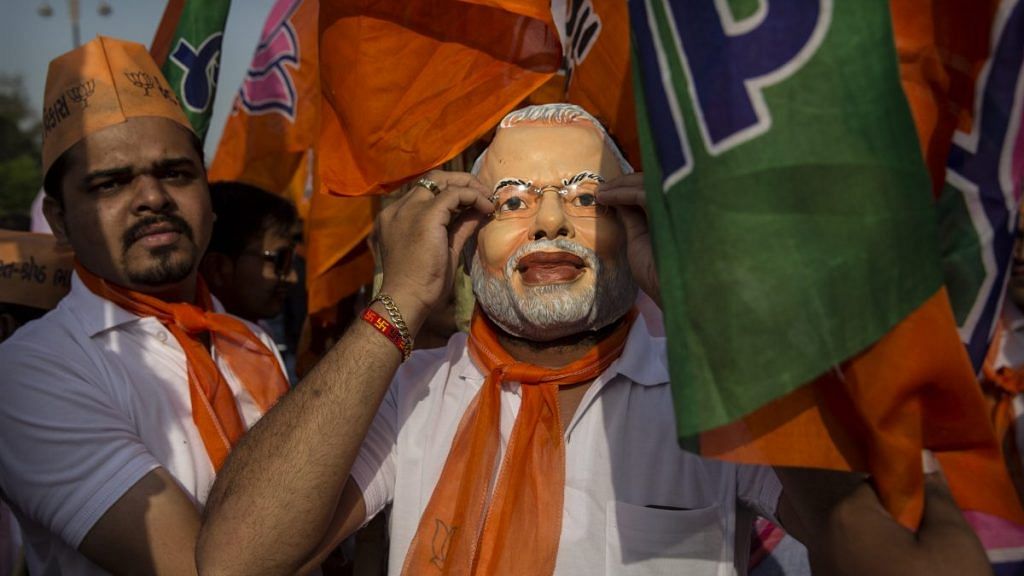The poor’s support of Right-wing parties is puzzling as they are choosing parties that work against their economic interests.
The victories of the Bharatiya Janata Party in 2014 in India and of Donald Trump in 2016 in the US were made possible by the votes of substantial numbers of working-class and poor voters. The poor’s support of Right-wing parties is puzzling as it suggests that voters are choosing parties that work against their economic interests. Why then do poor voters choose Right-wing parties?
In a new paper, I argue that in some societies, wealthy and poor voters form political coalitions to preserve “social status”. These are societies marked by stark social hierarchies in the form of caste, apartheid, aristocracy and the memory of slavery.
When ‘low-status’ groups start to compete for access to institutions viewed as instrumental to maintaining group social rank, high-ranked groups face threats to their status. Concerns about social-status make the poor open to appeals by anti-redistribution and Right-wing parties.
Also read: Dark side of India’s night lights: As states prosper, rich-poor gap in districts widens
The rise of the BJP after 1990
In 1990, Indian Prime Minister V.P. Singh made an announcement about his intention to introduce reservations in central government jobs to backward castes.
The result was a dramatic rise in vote-share for the Right-wing BJP in state elections. The maps before and after the Mandal announcement in 1990 reflect the same. The PM’s decision to accept the recommendations of the Mandal Commission, therefore, had far-reaching electoral consequences. A realignment had occurred in Indian politics.
What motivated voters to support the BJP?
Upper-castes, particularly Brahmins, in the Indian states have historically dominated both higher education and employment in central government jobs.
When lower-castes demanded that the state attempt to open opportunities into these sectors, upper-castes felt threatened. The timing of the quota announcement had the effect of consolidating upper-caste votes in favour of the Right-wing BJP.
Also read: Address jati, and not just caste, to fix rural welfare schemes like MGNREGA
I test this idea by analysing where the BJP gained more votes. I found that the BJP’s vote-share in state elections was higher in assembly constituencies where Brahmins dominated education in 1931 (the last caste-based census), 60-years prior!
No such relationship between historical Brahmin dominance in education and BJP vote gains existed prior to the Mandal announcement.
I used survey data to show that both wealthy and poor Brahmins voted for the Right-wing party where Brahmins were dominant in 1931. These voters also tended to hold more conservative views on the role of the state in alleviating poverty and on reservations for lower castes.
The electoral realignment shows the significance of social-status to voters born into high-castes. These voters derive psychic benefits from their position in the caste system and this rank is likely to hold greater value to poor upper-status voters than wealthy ones. Poor Brahmins also value the material benefits that come with access to education such as jobs in government.
When the former PM attempted to democratise these spaces dominated by high-castes, and not just redistribute income, it created a backlash from both the poor and wealthy upper-castes.
The BJP and the Hindu narrative
It is possible that regardless of caste, all Hindu voters in districts with high Brahmin concentrations were more swayed by religious appeals in the Ayodhya campaign and the demolition of the Babri Masjid in 1992 as such districts were more likely to be associated with religious jingoism.
While there is evidence that the BJP gained vote-share in Muslim dominated areas and constituencies which the procession targeted on its way to Ayodhya, the BJP separately gained upper-caste support in Brahmin dominated areas suggesting it adopted a two-pronged electoral strategy – caste and religion.
Also read: As Modi focusses on the poor, India’s rich are powerless & fearful
These arguments resonate with recent findings by scholars on American politics that show that American counties with higher levels of slave holdings in the period prior to the civil war have higher levels of support for the Right-wing Republican Party and higher levels of racial animosity amongst whites.
My findings explain why poor voters, born into historically privileged upper-status groups, often forgo potential redistributive benefits from the state for the material and psychological benefits of voting along with upper-status co-ethnics. There is a demonstrated link between historical caste-based status dominance and present-day vote choice.
The author is an Assistant Professor at Johns Hopkins University
This is an edited extract from her study titled “When do the poor vote for the right-wing and why: Hierarchy and vote choice in the Indian states”
Read the full paper here.
